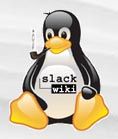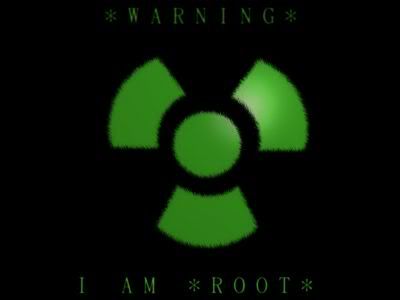|
Slackware
2007.05.13. 08:29
 In the beginning... In the beginning...

Wikipedia : " Slackware is a Linux distribution created by Patrick Volkerding of Slackware Linux, Inc. Slackware takes a different approach than other popular distributions such as Red Hat, Debian, Gentoo, SuSE, and Mandriva in that it tries to be a "UNIX-like" Linux distribution [1]. It has a policy of incorporating only stable releases of applications, and has a distinctive absence of distribution-specific configuration tools found in other distributions of Linux. Partisans have been known to say, "When you know Slackware, you know Linux... when you know Red Hat, all you know is Red Hat."
Slackware
In The Beginning...
"What is history," Napoleon famously said, "but a lie agreed upon." Fortunately (SCO notwithstanding), the history of Linux is (mostly) agreed upon by honest people. And anyone who knows the history of Linux will understand why Slackware deserves a special place in the pantheon of distros. Released in July 1993 by programmer extraordinaire Patrick Volkerding, Slackware 1.0 was one of the first ever Linux distros.
Remarkably, more than 10 years later, Slackware (now at version 9.1) still commands a loyal following despite the existence of formidable competition. Many other distros have come and gone, yet Slackware - like an old reliable grandfather clock - just keeps on ticking. Indeed, it still remains one of the major distros, though it has been surpassed in market share by the "big guns" such as Redhat/Fedora, Mandrake, SUSE, and Debian. So just what is it about Slackware that commands such a loyal following?
Keep It Simple Stupid (KISS)
In a nutshell, Slackware has chosen to keep it simple. Please note that "simple" should not be equated with "easy to use." Indeed, much the opposite is true. While other distros have loaded on Windows-like (or Macintosh-like) features such as graphical installers and point-and-click system administration tools, Slackware has decided to stick to its roots. Part of the Slackware philosophy is to be as Unix-like as possible. The definition of "Unix-like" can be a little tricky to pin down, but basically it means that Slackware shuns bells and whistles that newbies tend to like.
To put it another way, what Slackware users mean by "simple" has more to do with the underlying operating system. From a programmer's prospective, Slackware is indeed simple - bells and whistles add complexity and the potential for software bugs. However, for system administrators, Slackware requires more effort than user-friendly distros such as SUSE or Mandrake. Aspiring Slackers can expect to spend a fair amount of time working at the command line, using esoteric commands such as "groupadd" and "userdel." Furthermore, it will be necessary to manually edit a few configuration files such as /etc/rc.d/rc.inet1 and /etc/hosts. And then there is the issue of software installation - expect to spend time compiling source code and manually resolving dependencies.
Despite the lack of cute and cuddly graphical tools, many system administrators swear by Slackware and would use nothing else. Why? Because they understand Unix and it makes sense to them. Because they can learn the nuts and bolts of the operating system (if nothing else, running Slackware is educational). It should also be mentioned that Slackware is fast, stable and secure.
And besides all that, graphic utilities are for wimps.
Copyright (C) 2003 Robert Storey
Verbatim copying and distribution of this article is permitted in any medium, provided this copyright notice is preserved.
Slackware distribution
SlackWiki: click the penguin!

Slackware Pros and Cons
| Slackware is old |
It's mature, widely available, and the most widely installed Linux distribution
|
| Slackware lacks sexy administrative tools a la RedHat |
You're free to add other distributions such as the RedHat package manager
|
| Slackware includes bundled security holes |
We know what some of the vulnerabilities are and volunteers have posted fixes
|
| Donald Knuth complained about the fonts |
Patrick Volkerding fixed the fonts
|
| Linus Torvalds uses another distribution |
Oh well
|
| Slackware is assembled by Devil Worshippers |
Satanist crackers (not SATAN itself) will avoid your box
|
| Slackware is no longer |
This is a myth, Slackware is developed actively maintained, sans marketing hype
|
| Slackware is not supported by a commercial vendor or sanctionaed user group |
Linux support is available along with consultants, explained further in the section on Commercial Support
|
| Slackware is not created by a committee or development team |
Good. A system designed by one accountable individual is cohesive
|
Why, Then?
If you are a system administrator, you may already be dealing with one or more key servers running Slackware. Unless you have time to experiment at work, sticking to the tried-and-true distribution may be the easiest way to go. If you expect to get help from Unix literate friends and colleagues, better make sure they're running something compatible-odds are they're running Slackware. Its shortcomings are widely acknowledged, for the most part discovered, documented and patched whenever possible. You can put together a Slackware box, close the known security holes, and install some complementary tools from the other Linux distributions to create an excellent Unix server or desktop workstation, all in about half a day.
If you are still undecided whether Slackware is the tastiest flavor of Linux for you, have a look at the "Buyer's Guide" published in the Linux Journal, which gives a thorough comparison and evaluation of each major distribution. For a straightforward listing of Linux flavors, have a look at the Linux Distribution HOWTO on the Internet:
http://sunsite.unc.edu/LDP/HOWTO/Distribution-HOWTO.html
By Sean Dreilinger

Another Linux related sites:
Linux Home Page
RedHat Linux Distribution
Linux Head Quarters
Linux Journal
Linux Gazette
Linux Resources
Linux World
Linux mafia
Suse Linux
Suse Linux FAQ
|

